

Hosting this website on a farm - or anywhere
source link: https://www.jeffgeerling.com/blog/2022/hosting-website-on-farm-or-anywhere
Go to the source link to view the article. You can view the picture content, updated content and better typesetting reading experience. If the link is broken, please click the button below to view the snapshot at that time.
Hosting this website on a farm - or anywhere
February 9, 2022
tl;dr: This website is currently being hosted off-grid, on a cluster of Raspberry Pis, via 4G LTE—or at some points through the same tunnel via WiFi if signal strength gets too low. Here's the GitHub repo for the project.
Note: The website was down for a few hours this morning, as shortly after this post I started getting a 40-50 Mbps flood of POST requests (over 6 million in a 30 minute time frame)... and yeah, no way the little Pi cluster could handle that. Thanks, Internet. It's back up through Cloudflare now, and I'll post more on this 'fun' experience later.
A couple weeks ago, after months of preparation, I took my 4-node Turing Pi 2 cluster (see my earlier review) to my cousin's farm, and ran this website (JeffGeerling.com) on it, live on the Internet—completely disconnected from grid power or hard-wired Internet.
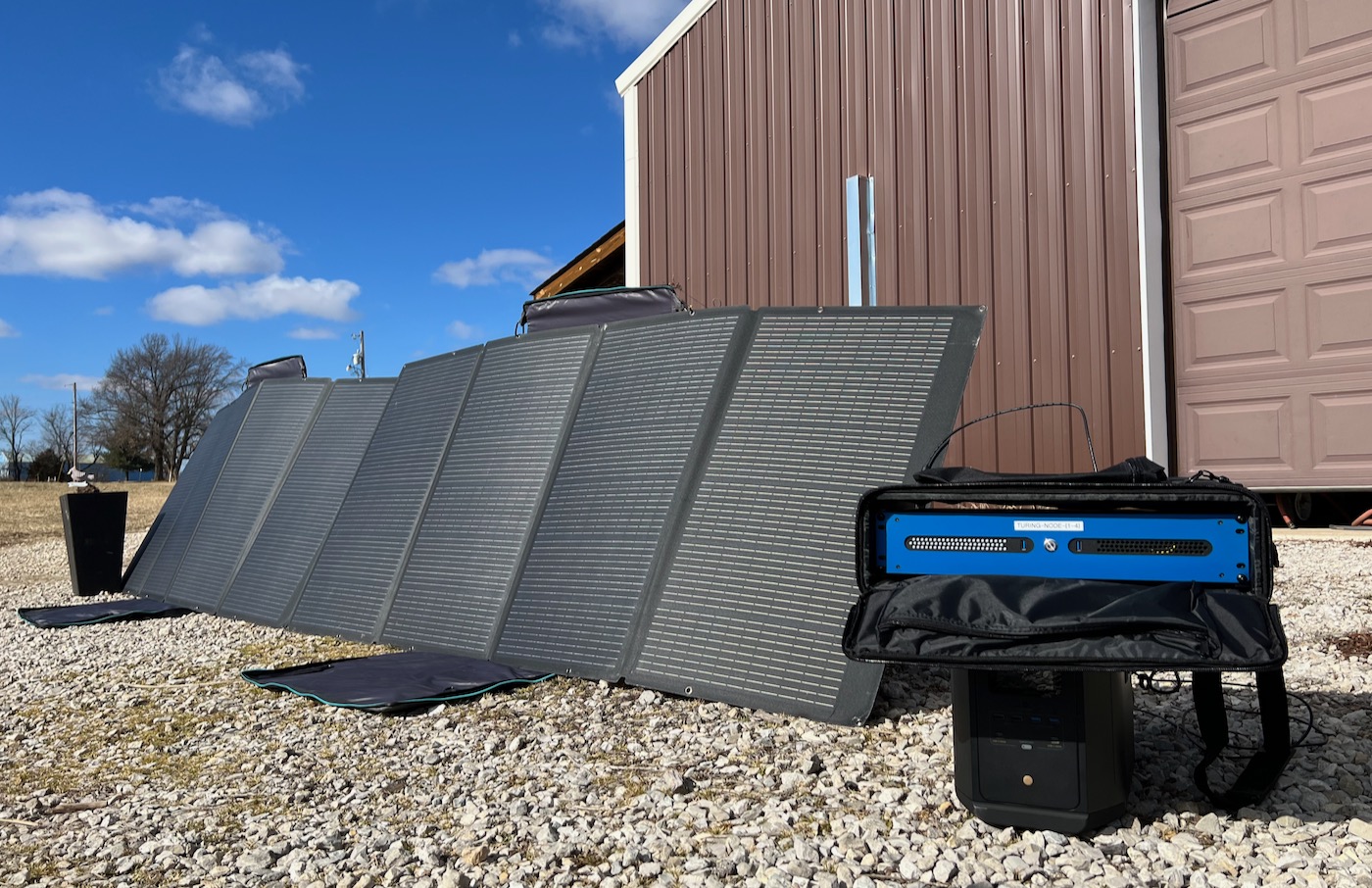
Right now this website is running on the same cluster, using the same configuration, but at my house (I couldn't leave the cluster at my cousin's farm indefinitely—the cows would get it!)
But what's special about my cluster? Well, my goal at the outset was to build an energy efficient Pi cluster that I could take literally anywhere (within reason), and continue hosting this website.
I automated the entire cluster setup in my Turing Pi 2 Cluster repository on GitHub.
I can't relate the whole story in this post—for that, watch the video:
Full Disclosure: The YouTube video I made for this project was sponsored by EcoFlow.
In this post, I'll give a quick rundown of the major problems I encountered, and my solutions.
Networking

4G Connectivity: After finding a hardware bug with the prototype board (caused by the resistor pictured above), I used a Quectel EC25-A 4G modem and a SixFab SIM card to get connected to the Internet.
I wrote up an entire post about the process: Using 4G LTE wireless modems on a Raspberry Pi.
I could get connected to the Internet, but in doing so, I encountered another new problem:
CG-NAT: Because I couldn't get a publicly-addressable IPv4 address (and IPv6 support across different carriers isn't reliable), I had to set up an SSH tunnel between the cluster and a VPS under my control, which I configured as a reverse proxy (using Nginx).
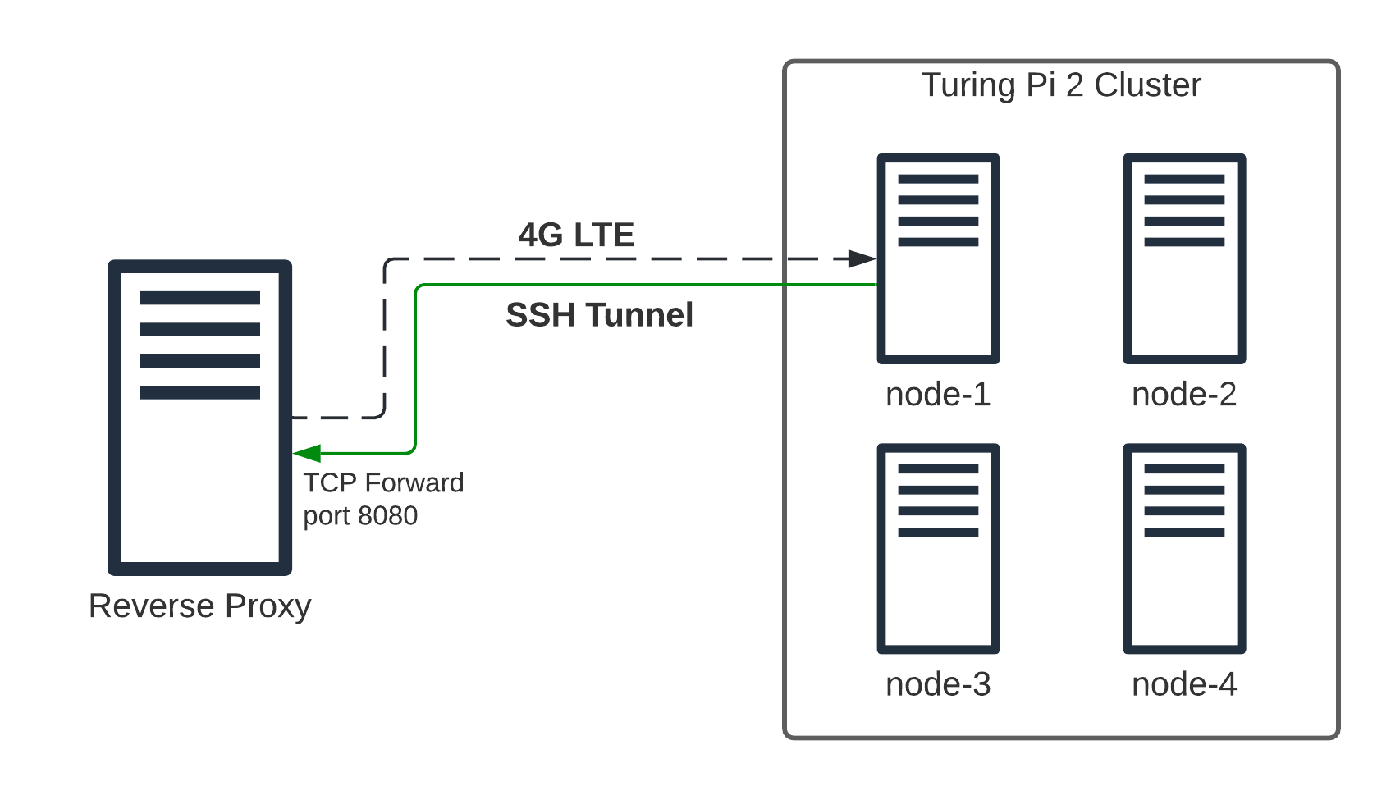
I wrote up a post on that, too: SSH and HTTP to a Raspberry Pi behind CG-NAT.
All these things are great for a single Raspberry Pi, but my Turing Pi 2 cluster is made up of four Pis, all together in a Kubernetes cluster.
Not wanting to compromise on the flexibility a 4-node cluster gives me, I decided to set up the first node (the one with the 4G modem) as a lightweight router.
This was doubly necessary as Kubernetes was very unhappy when the control plane and all the nodes would change IP addresses as I swapped the cluster between various networks (LAN at my house, LAN at a friend's house, a separate WiFi network, a 4G hotspot, etc.).
Because getting Kubernetes running on top of OpenWRT is a pain, I instead set up dnsmasq and iptables to bridge the first node's connection to the rest of the cluster through the Turing Pi 2's built-in network, on a subnet separate from my LAN.
Finally, I needed a way to switch between Ethernet, WiFi, and USB (4G) interfaces, so I learned how to do that using network route priorities (metrics) in dhcpcd in Debian... and of course I wrote up that process: Network interface routing priority on a Raspberry Pi.
There are a few other tidbits I did in the Turing Pi 2 Cluster Ansible playbook, but those were the major challenges.
Storage
Everyone knows how unreliable microSD cards are for longevity, especially under random-write-heavy workloads (even the best ones).
And seeing as I'd be monitoring the cluster with Prometheus and Grafana, plus running my site's MariaDB database on the Pis, storing everything on microSD (or even eMMC) storage was a non-starter.
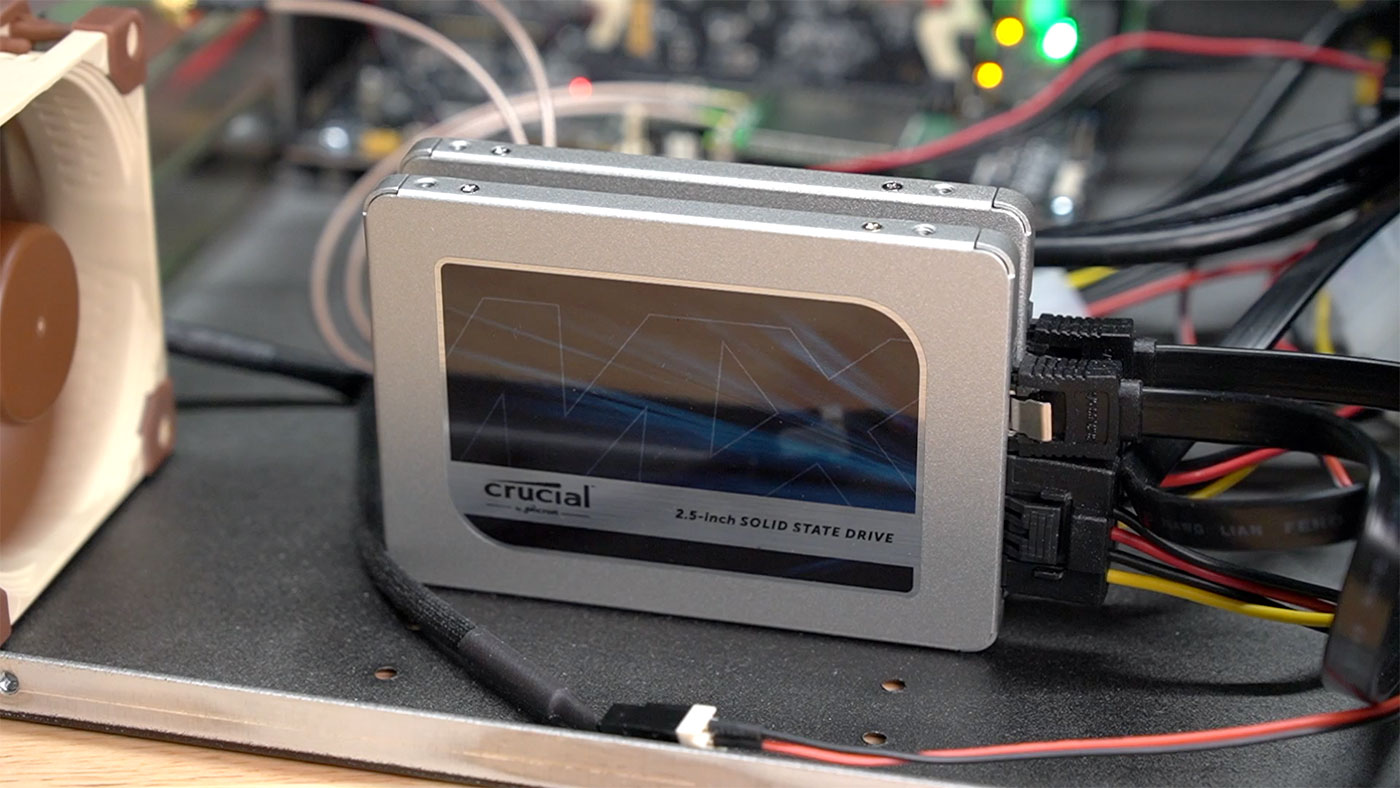
Luckily, the Turing Pi 2 includes two SATA III connections directly attached to node 3. So I set up a RAIDZ1 ZFS mirror zpool on two Crucial MX500 SSDs and configured an NFS share—and I wrote this up in my ZFS for Raspberry Pi post.
In Kubernetes, I set up the nfs-client provisioner so I could have Drupal and MariaDB store their persistent data on NFS volumes.
The storage situation isn't perfect: now nodes 1 (for network routing) and 3 (for storage) are both critical to the functioning of the cluster, and are both Single Points of Failure (SPOF).
Ideally I'd have fast storage on each node, and I'd create a distributed filesystem with Rook/Ceph or GlusterFS... but I can't have everything on a $75 Raspberry Pi (I'm running the 8GB Lite versions with WiFi + Bluetooth).
Power
As I mentioned earlier, one of my main goals was to create a completely portable system that could be run anywhere—grid connection or not. And for power, I'm plugging the cluster into an EcoFlow Delta Max portable power station, with 1,612 Watt-hours of battery capacity.
I contacted EcoFlow on a whim after seeing Matthias Wandel try overloading one of their 'Pro' units last year, and they were happy to assist on this project—even throwing in sponsorship so I could devote more time and budget to making the video at the top of the post!
They sent the Delta Max—which I've tested as being able to run the cluster (at about 17W average consumption) for up to 42 hours—along with two 400W solar panels.
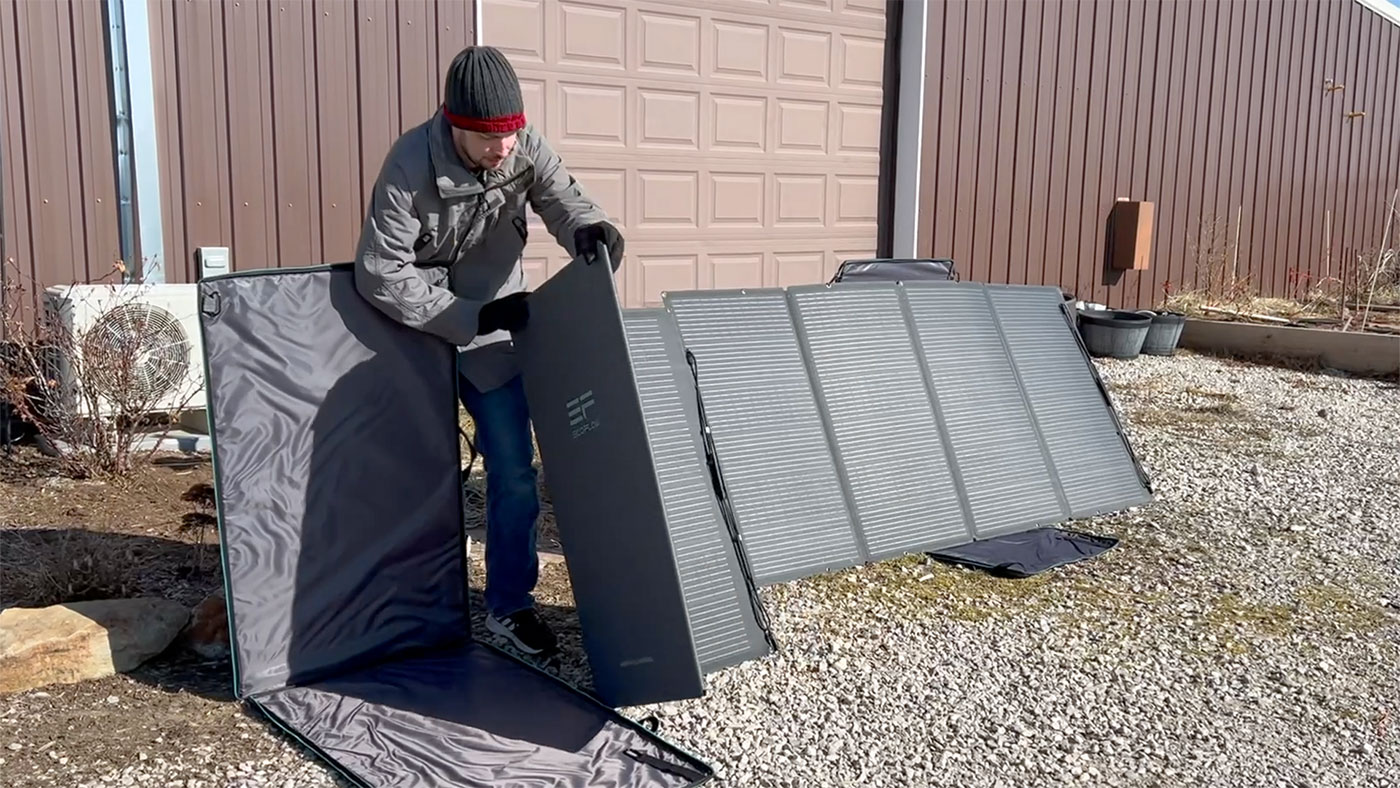
These panels are pretty massive (each one weighs 12.5 kg or about 30 lbs), but they live up to the marketing—I was able to pull down 460W using just one in full sunlight, and was hitting 700-800W power input on the Delta Max when I had them connected in series. That's plenty of juice to keep the battery topped off so I can power the cluster indefinitely.
It was a little awkward to carry everything while plugged in, but I was able to transfer the battery and cluster from my car to the solar panels (to top off their charge), then inside, and back to my car—and the cluster remained online the entire time.
Physical Protection
Finally, to make sure I could transport the Turing Pi 2 cluster safely, I racked it up in a 2U Mini ITX server enclosure made by MyElectronics.nl, then mounted that inside this SKB 2U soft rack case.
And here it sits—this picture was taken before I turned in for the night on February 8, a few hours before this blog post is set to go live on the 9th:
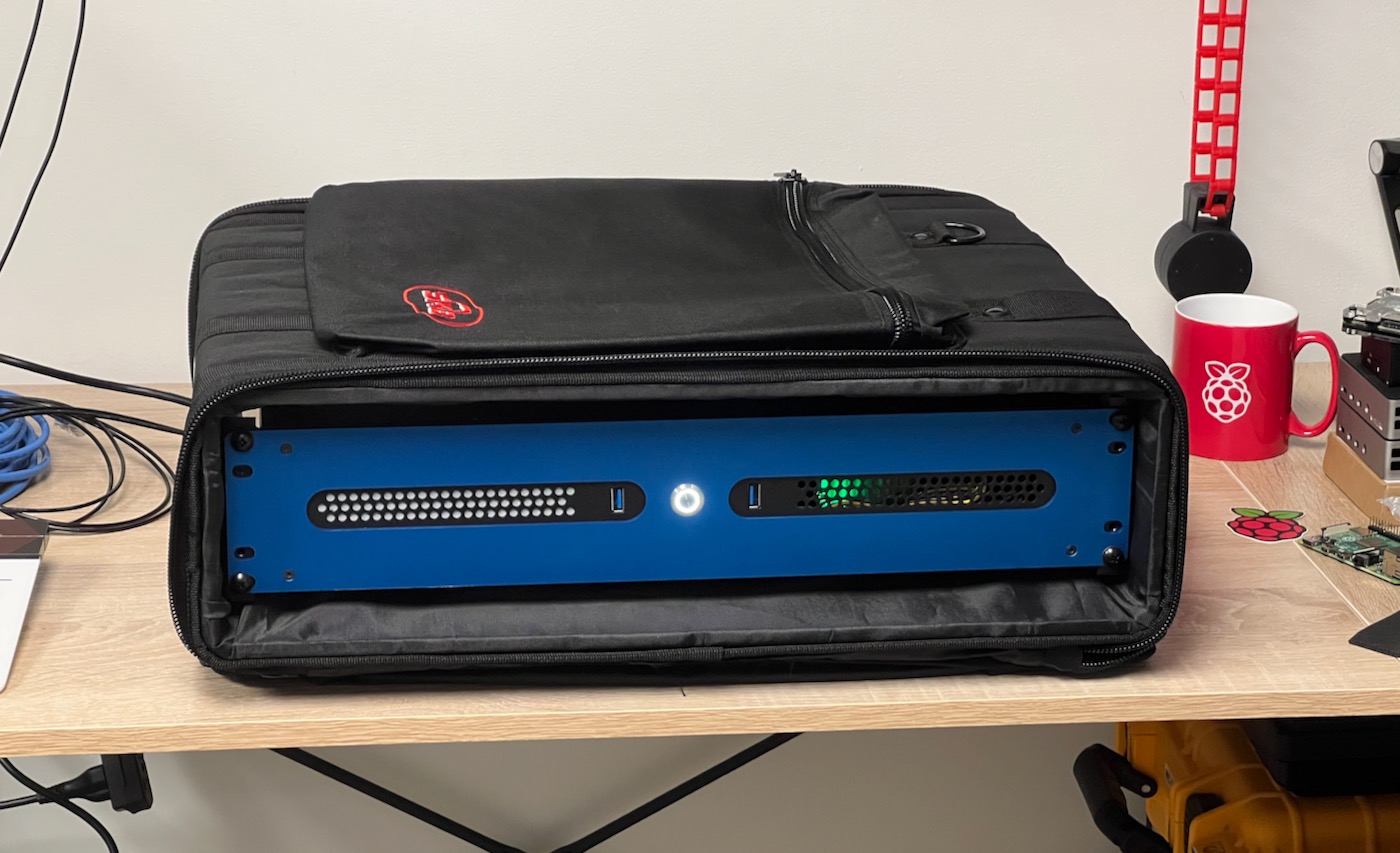
Conclusion
There are some things I still want to improve. As noted in this issue, I'd love to build a more automated 'switch between VPS and remote cluster' setup—though the hardest part of that is pulling down or pushing up the database, and rsync'ing the 1.2 GB or so of files I have on this website.
Even with a stable 4G connection, I can sometimes only get a few megabits of upload bandwidth, and that means to do the 'failover' correctly, I could either miss some comments or other site data during the long process, or I'd have to have my site offline for a long (to me) period of time, in the range of minutes. (Not fun for someone who prides himself on having 99.998% of uptime since 2009!)
As it is, I'm happy with how this all turned out. Things have been running quite stable:
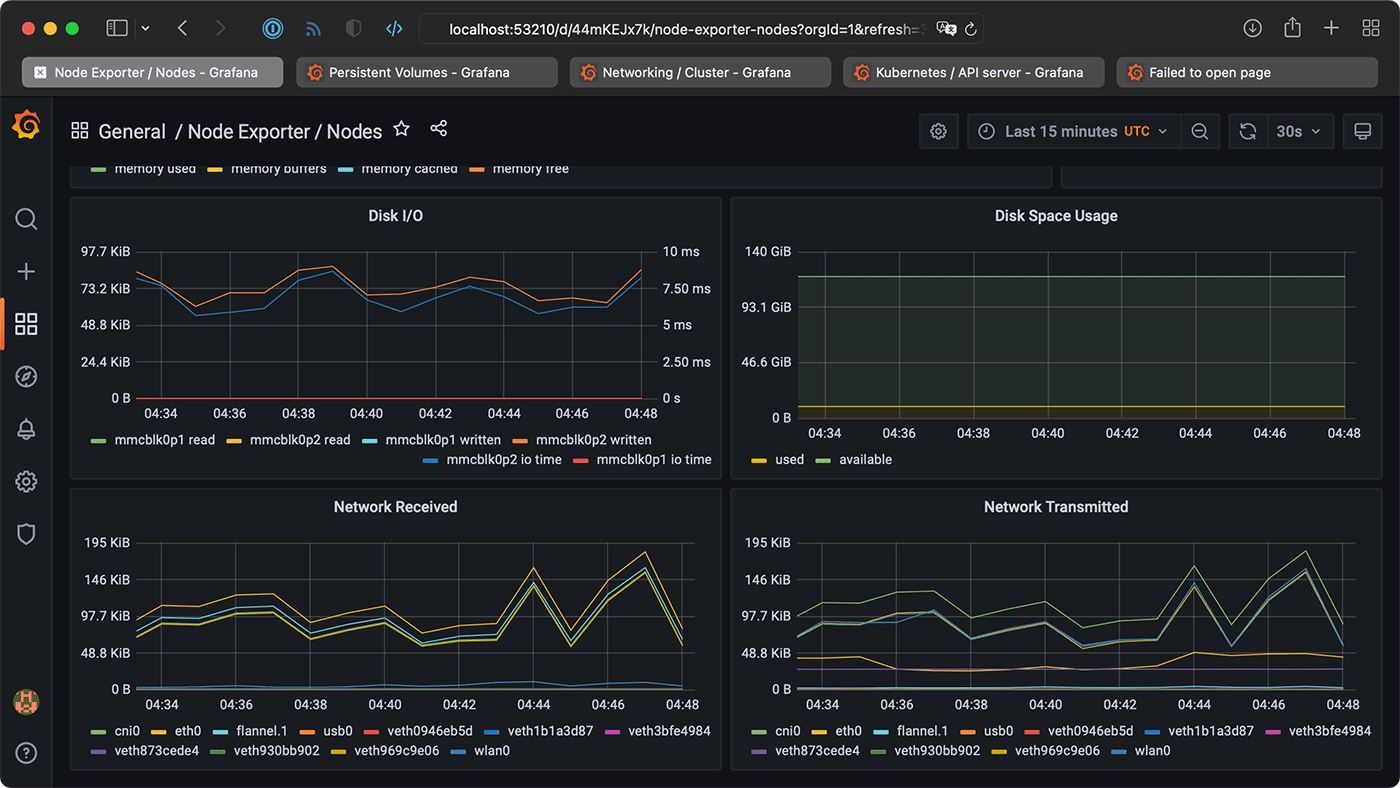
I have, multiple times, hard-power-cycled the cluster, booted it with either 4G or WiFi routing, and it always connects back through it's tunnel to my VPS, and always resumes serving web traffic.
There was one time CoreDNS stopped working—of course it's DNS—but a quick reboot fixed that, and it's been surprisingly reliable since.
Of course, if this post gets any traction on HN, Reddit, or elsewhere... that could change 😅.
Recommend
About Joyk
Aggregate valuable and interesting links.
Joyk means Joy of geeK